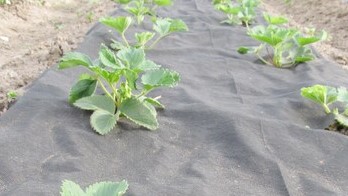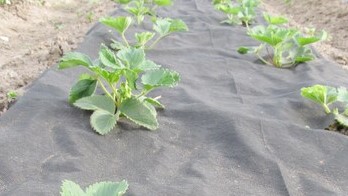Types of Geo textiles – Functions and Uses in Construction
Geo textile is a synthetic permeable textile material used to improve the soil over which roads, embankments, pipelines, and earth retaining structures are built. Different geo textile materials are specified for various characteristics, such as separation, filtration, drainage, reinforcement, sealing, and protection

Types of Geo-textile
1) Knitted Geo-textiles
2) Non-Woven Geo-textiles
3) Woven Fabric Geo-textiles
Knitted Geotextile
Knitted geo textiles are manufactured by the process of interlocking a series of loops of yarn together. All of the knitted geo synthetics are formed by using the knitting technique .
Non-Woven Geotextile
Non-woven geotextiles are manufactured from either continuous filament yarn or short staple fiber. The bonding of fibers is done using thermal, chemical or mechanical techniques or a combination of techniques. Its Thickness of 0.5-1 mm .
Woven Fabric Geotextile
Commonly found geotextiles are of the woven type and are manufactured by adopting the techniques which are similar to weaving usual clothing textiles. This type has the characteristic appearance of two sets of parallel threads or yarns.
Functions of Geotextiles
Different geotextile materials are specified for various characteristics, such as separation, filtration, drainage, reinforcement, sealing, and protection.
Separation
When a geotextile is installed between two different soil materials, the function of separation plays an important role.
The main purpose of this type of geotextile is that when water gets into the soil strata, the geotextile will prevent soils from mixing. For example, in road construction, you might want to keep fine sub-grade aggregate separate from the coarse aggregates of the bottom layer.
Filtration
Filtration geotextile characteristics are used to allow for water to move in both directions. These types of geotextiles can be woven or non-woven and are used to prevent fine aggregates from moving between soil layers. Depending on the porosity and permeability of the material, geotextiles also can promote lateral flow of drainage water, dissipating the kinetic energy of the capillary rise of groundwater.
Geotextiles can be used in both vertical and horizontal applications, helping to solve drainage problems around homes and along roads and curbs.
Reinforcement
When a geotextile is used to improve soil characteristics, its design is based on a few key factors:
- Friction or movement restraint
- Support of loads
- Changes in bearing failure plane
This is comparable to the function of rebar in concrete. Geotextiles are used on embankments and roads being built over very poorly graded soils, allowing for steeper embankments. For such applications, it is always recommended to have design parameters provided by a geotechnical engineer.
Sealing
A geotextile fabric can be impregnated with asphalt or other mixes to make it impermeable and thus capable of restricting the flow of liquids in both directions. This requires a non-woven fabric. Impermeable geotextiles may be used to prevent contamination of soil or groundwater from pollutants above or to prevent the loss of potable water due to evaporation or contamination.

